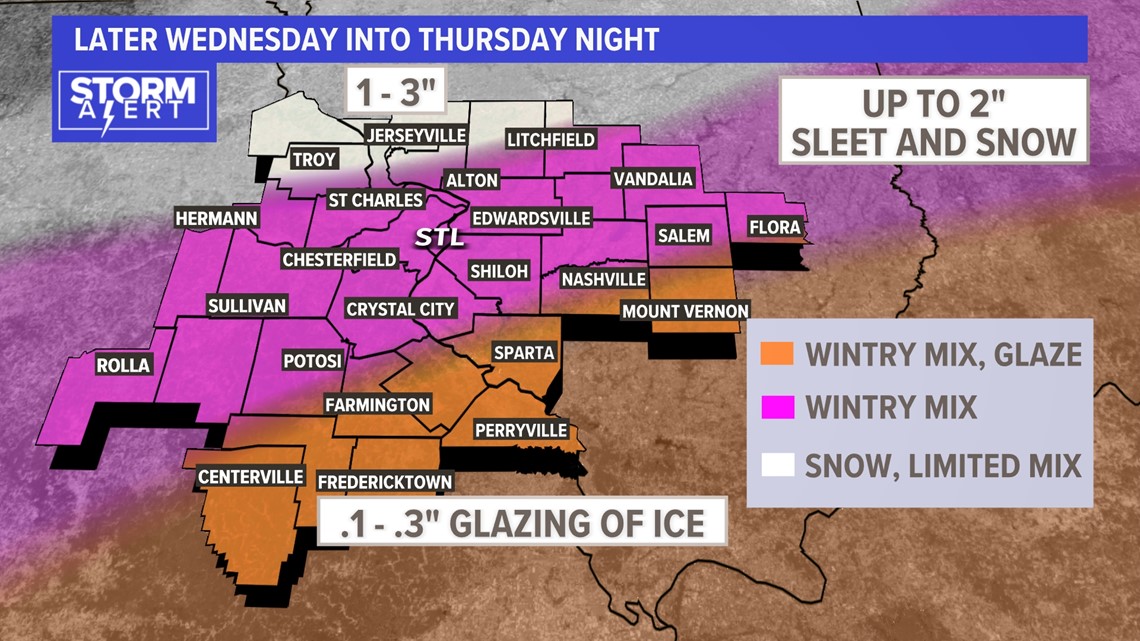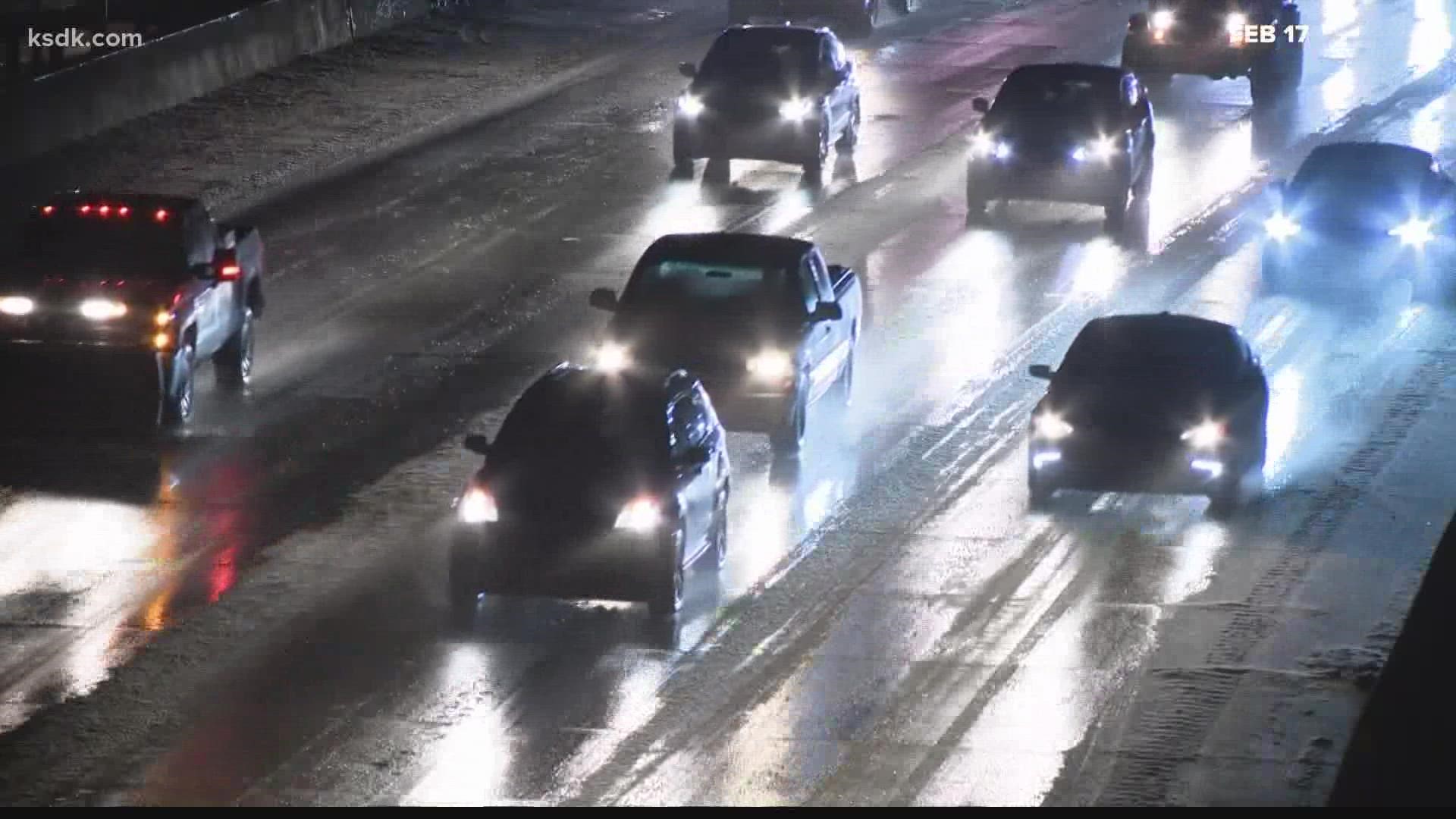ST. LOUIS — MoDOT is issuing a familiar warning Tuesday: winter weather could make for dangerous driving conditions.
For the third week in 2022, winter weather is expected in the St. Louis area, with potential sleet and snow for much of the area. As with other recent waves of winter weather, MoDOT is asking drivers to be careful on the roads when the weather hits.
“Though high accumulations have not been forecast, it’s important to remember that any amount of ice, sleet and snow will make driving difficult," said Becky Allmeroth, MoDOT's chief safety and operations officer. "Slow down if you need to travel and anticipate some delays along your route.”
Colder air is surging across the region in the wake of showers and a few stronger storms that moved through early Tuesday, especially south of the metro area. The arrival of the cold air will set the stage for the next winter storm to move in during the day Wednesday.
A variety of wintry precipitation across Missouri and Illinois is expected to develop from the southwest Wednesday moving into the metro area just before or during the evening rush hour. Mostly sleet is expected in the metro area with snow farther to the northwest and more of an icy glaze from freezing rain to the southeast.
The National Weather Service has issued a winter storm watch for much of the area, including the metro St. Louis area, for Wednesday afternoon into Thursday night.


It's always best to avoid driving during these conditions, but here are five tips to keep you safe on the road if you choose to go out.
Cold-weather driving tips:
- Keep a bundle of cold-weather gear in your car, such as extra food and water, warm clothing, a flashlight, a glass scraper, blankets, medications, and more.
- Make certain your tires are properly inflated and have plenty of tread.
- Keep at least half a tank of fuel in your vehicle at all times.
- Never warm up a vehicle in an enclosed area, such as a garage.
- Do not use cruise control when driving on any slippery surface, such as on ice and snow.
Tips for driving in the snow:
- Stay home. Only go out if necessary. Even if you can drive well in bad weather, it's better to avoid taking unnecessary risks by venturing out.
- Drive slowly. Always adjust your speed down to account for lower traction when driving on snow or ice.
- Accelerate and decelerate slowly. Apply the gas slowly to regain traction and avoid skids. Don't try to get moving in a hurry and take time to slow down for a stoplight. Remember: It takes longer to slow down on icy roads.
- Increase your following distance to five to six seconds. This increased margin of safety will provide the longer distance needed if you have to stop.
- Know your brakes. Whether you have antilock brakes or not, keep the heel of your foot on the floor and use the ball of your foot to apply firm, steady pressure on the brake pedal.
- Don't stop if you can avoid it. There's a big difference in the amount of inertia it takes to start moving from a full stop versus how much it takes to get moving while still rolling. If you can slow down enough to keep rolling until a traffic light changes, do it.
- Don't power up hills. Applying extra gas on snow-covered roads will just make your wheels spin. Try to get a little inertia going before you reach the hill and let that inertia carry you to the top. As you reach the crest of the hill, reduce your speed and proceed downhill slowly.
- Don't stop going up a hill. There's nothing worse than trying to get moving up a hill on an icy road. Get some inertia going on a flat roadway before you take on the hill.

